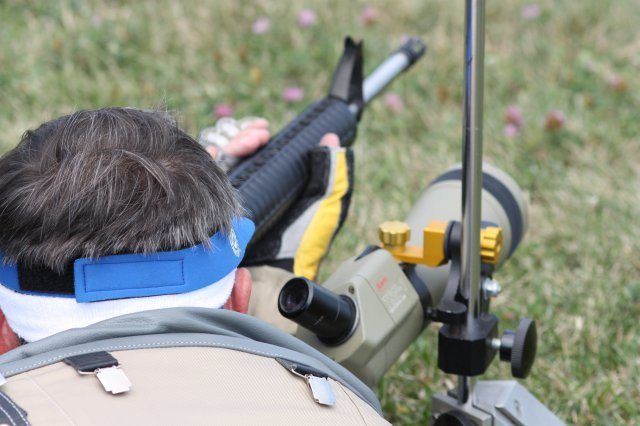The Army’s new M855A1 Enhanced Performance Round is performing well under combat conditions in Afghanistan, but how does it stack up during a rifle competition?
The Army recently put it to the test against some of the best marksmen in the world at the 2012 National Rifle Association’s National High-Power Rifle Championship at Camp Perry, Ohio, in early August.
The Army’s newest 5.56mm ammunition was initially fielded to troops in Afghanistan in July 2010 as a replacement for M8855 “green tip” ammo. As green tip ammo stockpiles are drawn down Soldiers will begin using the new M855A1 Enhanced Performance Round, or EPR, for training as well as combat operations.
Rob Harbison, a contractor supporting small caliber ammunition capability development at Fort Benning, Ga., competed in the competition at Camp Perry while firing the EPR. This was a special event for the Project Manager for Maneuver Ammunition Systems and the Army’s Maneuver Center of Excellence as it was an opportunity to showcase the capabilities of this new round.
“We felt that we had an excellent opportunity in Rob to put the M855A1 EPR in the hands of a veteran of the Camp Perry national competitions,” explained Lt. Col. Philip Clark, the Army Product Manager for Small Caliber Ammunition. “We had every confidence that his abilities, coupled with what we know to be quality ammunition, would yield positive results.”
An act of the U.S. Congress established the National Shooting Matches in 1903 to promote rifle practice and firearms safety. The competition is open to military and civilian competitors, and has been hosted by Camp Perry, a National Guard training center in Ohio, since 1907.
The matches are co-administered by the Civilian Marksmanship Program, or CMP, and the National Rifle Association. The National Matches are the premier shooting competition in the United States, and draw the best competitive marksmen in the country.
The competition began July 30 with the CMP’s President’s match. The President’s 100 is a 30 shot match fired in one day. Competitors fire M16-series or M14 series (and civilian equivalent) weapons at 200, 300, and 600 yards at bull’s-eye targets.
The top 100 competitors are considered to be “in the President’s 100” for that year.
Harbison placed 169 out of 1,242 of the world’s finest marksmanship competitors on that day, putting him in the top 15 percent.
The competition would then pick back up Aug. 5-10, with the NRA National High Power Rifle Championship. This is a much less restrictive competition which allows the use of “unlimited” rifles with modified sights, custom stocks, high performance calibers and other ergonomic improvements over standard issue military service rifles.
Harbison finished 86th of 385 competitors, and 46th (17th civilian) of 200 marksmen competing with an M16-Series weapon.
Throughout the competition, Harbison had several noteworthy performances, including firing a perfect 200 points in the Coast Guard Trophy Match, which is 20 shots fired from the sitting position at 200 yards. He also finished 17th overall in that match (of 385 competitors), finishing in the top five percent.
Also of note Harbison scored a perfect 100 on the final string of ten shots during the Air Force Cup Trophy Match, fired at 600 yards from the prone position. That is 10 shots in a row within the 12-inch, 10-point ring at 600 yards with combat ammunition.
While at Camp Perry, Harbison discussed the new round with his fellow competitors, and answered questions about the new ammunition.
Harbison was happy with the performance of the EPR, with his scores showing that the Army’s newest general purpose round is accurate enough to go toe-to-toe in this competition with the best ammo that can be bought or hand-loaded.
“Using the Army’s newest general purpose ammo was not a hindrance in this competition,” Harbison said. “When I did my part, the M855A1 was right on target all week.”
“I don’t think I could have scored any higher if I was using match grade competition ammunition,” Harbison added.
COMPARISON TO THE M855
The EPR contains an environmentally-friendly projectile that eliminates up to 2,000 tons of lead from the manufacturing process each year in direct support of Army commitment to environmental stewardship. This is a clear example of how “greening” a previously hazardous material can also provide extremely beneficial performance improvements.
There are three main areas in which the new round excels: soft-target consistency, hard-target penetration, and the extended range at which it maintains these performance improvements.
According to Army officials, the M855A1 represents the most significant performance leap in small-arms ammunition in decades.











